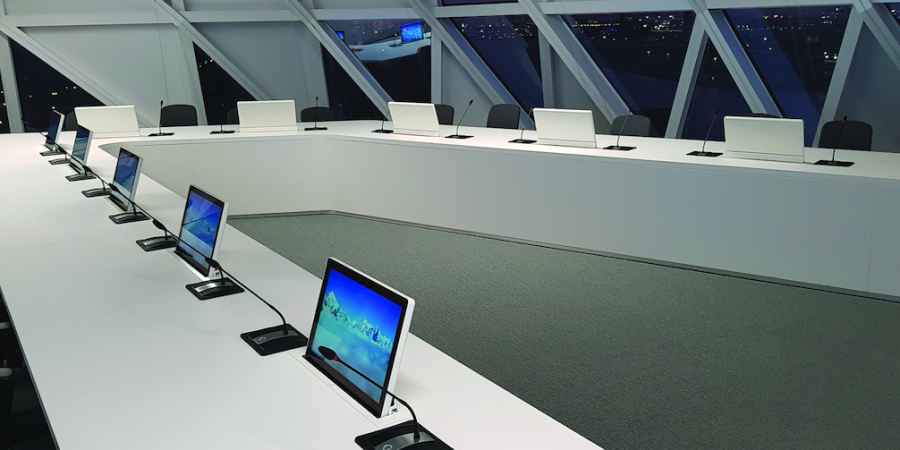A corporation is a living organism that is born, grows, evolves, changes, beats, feels, gets excited, gets angry, gets sick, languishes, regrows, laughs and cries. And so are its meeting rooms. If good management of human capital is fundamental to the success of a company, it is also essential to promote emotions in the places where people meet, debate and exchange ideas. That is why the concept of “creating experiences” is so in vogue, because working without emotion is like dancing without music. Dance experts say that everything flows as soon as the body moves; dance helps us to disinhibit ourselves, to give the best of ourselves, to forget about shame and to express our emotions. Have you ever experienced entering a room where technology dances? Screens, microphones, cameras and speakers appear and disappear inside the furniture as if by magic, through a harmonious, silent and inspiring movement. And the audience smiles. Yes, they smile. And by smiling they are happier, more creative and more efficient. And more participative! Think about it: How many times have you smiled during a meeting? How many times do people in your team or in your department laugh?
Many of us wonder what will happen to meeting rooms in the future: will face-to-face meetings disappear? Will they be replaced by remote meetings? Those of us who have been in the market for a few years now have encountered this dilemma several times. With the rise of videoconferencing, face-to-face meetings were predicted to disappear and the same thing happened when e-mail emerged. However, we humans are moved by emotions; science has shown that man, above all, is an emotional and not a rational being. It is not reason that differentiates us from animals but the ability to feel and understand those emotions. And emotions are demonstrated with much more than words. 93% of what we transmit to others is expressed through non-verbal communication, including body language and tone of voice. This means that what we say as such represents only 7% of what we want to say. Then there are the tactile sensations, the olfactory sensations, the energy that each of us releases and transmits; the sensations that cannot travel through the network. Our humble opinion is that virtual and face-to-face meetings will feed off each other, will be complementary and not substitutes, will nourish each other and will help us to be more efficient and more productive. They will coexist and help us to be better. We will probably have to adopt new habits: more distance between the assistants and we will have to comply with a series of security protocols. But face-to-face meetings, and especially important meetings where important decisions have to be made, will still be there. Think of a streaming concert, it’s great but it can never replace live music. Live music allows us to feel the energy of the artists, of the audience, and to vibrate and move with much greater intensity.
Welcome to a new and interesting era where emotions are sure to prevail!
